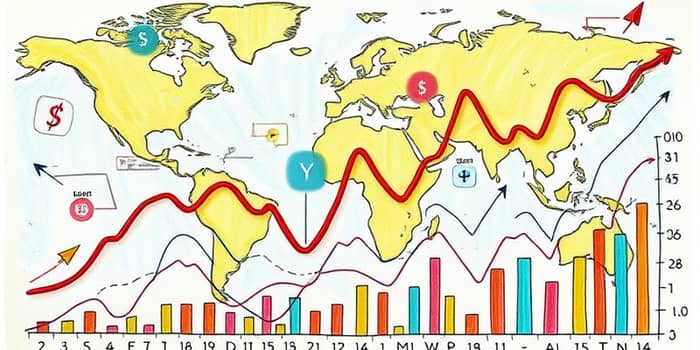
In early 2025, global bond markets have entered a period of heightened uncertainty. As investors grapple with new policy announcements, rising deficits, and international tensions, yields across maturities have swung dramatically. This article examines the forces driving this volatility, interprets key data, and explores the implications for markets and portfolio strategies.
Volatility in the bond market remains elevated as investors adjust positions in response to ongoing shifts in tariff policy and fiscal announcements. The MOVE Index, a benchmark of Treasury volatility, spiked sharply in April 2025, reflecting sudden reaction to proposed U.S. tariffs and tax-and-spend bills.
Long-term rates have climbed to levels not seen since the global financial crisis. The 30-year U.S. Treasury yield has moved above 5%, marking the highest levels since 2007. Similar trends have emerged internationally, as sovereign borrowers face widening deficits and bond purchasers demand extra compensation for risk.
These figures underscore a broader, global phenomenon: investors are demanding higher returns to offset total U.S. government debt growth and fiscal uncertainty. High yield segments, while still functioning, have seen issuance postponed as risk premiums surge.
Multiple forces converge to shape bond yield swings. Understanding these drivers equips investors to navigate choppy waters:
Rate decisions by the Fed directly influence short-term yields, while asset purchase programs and forward guidance can flatten the curve by altering expectations. When investors foresee rate cuts, long-term yields may decline in anticipation, as evidenced by early 2024 market pricing.
Conversely, persistent upward surprises in inflation—or the fear thereof—force bondholders to demand steeper returns. In that scenario, the real yield (nominal yield minus inflation) can turn negative, eroding fixed-income appeal unless yields rise sharply.
The yield curve, representing the spread between long- and short-term rates, is a vital barometer of economic sentiment. In mid-2025, the curve has begun to steepen after a brief inversion early in the year, as long-dated yields outpaced overnight rates.
A steepening curve typically signals expectations for stronger growth or higher inflation ahead. As investors price in larger deficits and potential stimulus, demand for long-term paper softens, pushing yields upward. If growth disappoints or inflation moderates, long-term yields may retrace downward, possibly leading to curve flattening in late 2025.
In recent months, risk appetite has cooled. Credit desks report broad-based flight-to-safety moves whenever policy announcements trigger uncertainty. U.S. Treasuries become the default refuge, even as their yields climb.
Default rates in the high yield sector remain mild, slipping slightly from 5.3% to 5.2% between January and February 2025. Yet issuance volumes have contracted, and spreads over Treasuries remain near multi-year highs. Institutional investors are rebalancing toward shorter maturities, reducing duration risk in their portfolios.
These swings in fixed income have spillover effects into equities and currencies. Higher borrowing costs can squeeze corporate profits, dampening equity valuations. Meanwhile, foreign investors repricing U.S. assets influence the dollar, feeding back into import prices and inflation dynamics.
Looking ahead, bond investors should monitor three key developments:
While potential rate cuts could alleviate upward pressure on yields, they are conditional on incoming data. If growth proves resilient and inflation remains sticky, long-term yields might sustain current elevated levels or even push higher.
In such an environment, active management of duration, strategic credit allocation, and vigilant monitoring of policy signals will be essential. By understanding the interplay of monetary moves, fiscal shifts, and market psychology, investors can better position portfolios for an uncertain but opportunity-rich fixed-income landscape.
References













